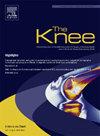Knee injury and osteoarthritis outcome score and knee society score for the minimal clinically important differences after cruciate-retaining total knee arthroplasty: Two-year follow up
IF 1.6
4区 医学
Q3 ORTHOPEDICS
引用次数: 0
Abstract
Background
This study investigated changes in the Knee Injury and Osteoarthritis Outcome Score (KOOS), 2011 Knee Society Score (KSS), and minimal clinically important differences (MCIDs) of these scores preoperatively to 2 years after total knee arthroplasty (TKA).
Methods
This single-center retrospective study included 168 patients who underwent primary cruciate-retaining (CR) TKA using the subvastus approach. The KOOS and KSS were assessed preoperatively and during the 3-month, 6-month, 1-year, and 2-year follow ups. The MCIDs of the KOOS and KSS were calculated using distribution-based methods with standard deviation.
Results
All patient-reported outcome measures improved considerably from preoperatively to 3 months postoperatively. KOOS pain and symptom scores considerably improved at approximately 2 years postoperatively, with KOOS activities of daily living (ADL) and sports/recreation subscale scores showing rapid improvement within 3 months, followed by smaller gains. MCID thresholds for KOOS subscales were as follows: pain, 14.3–15.3; symptoms, 14.1–15.6; ADL, 15.2–16.0; sport/recreation, 11.7–11.8; and quality of life, 13.6–14.4. KSS objective knee indicators and satisfaction improved considerably approximately 2 years postoperatively; however, scores on the expectation and functional activity subscales did not improve after 1 year. MCID thresholds for KSS subscales were as follows: objective knee indicators, 4.6–4.7; satisfaction, 4.9–5.0; expectation, 2.4; and functional activities, 12.0–12.3.
Conclusions
Improvements in the KSS objective knee indicators and KOOS subjective pain and symptom scores were similar over the 2-year follow up. These findings may help better understand the expected outcomes of CR-type TKA, especially in severe osteoarthritis cases, thereby informing patient counseling.
膝关节损伤和骨关节炎结局评分和膝关节社会评分对保留十字架全膝关节置换术后的最小临床重要差异:两年随访。
背景:本研究调查了膝关节损伤和骨关节炎结局评分(oos)、2011年膝关节社会评分(KSS)的变化,以及这些评分在术前至全膝关节置换术(TKA)后2年的最小临床重要差异(MCIDs)。方法:这项单中心回顾性研究纳入了168例采用股下入路行原发性椎体保留(CR)全椎体置换术的患者。术前、随访3个月、6个月、1年和2年分别评估KOOS和KSS。采用基于分布的方法计算kos和KSS的MCIDs,并伴有标准差。结果:从术前到术后3个月,所有患者报告的预后指标均有显著改善。kos疼痛和症状评分在术后约2年显著改善,kos日常生活活动(ADL)和运动/娱乐亚量表评分在3个月内快速改善,随后小幅改善。oos亚量表的MCID阈值为:疼痛,14.3-15.3;症状,14.1 - -15.6;ADL, 15.2 - -16.0;运动/休闲,11.7 - -11.8;生活质量,13.6-14.4。术后约2年,KSS客观膝关节指标和满意度显著提高;然而,期望和功能活动亚量表的得分在1年后没有改善。KSS亚量表的MCID阈值为:膝关节客观指标4.6-4.7;满意,4.9 - -5.0;期望,2.4;功能活动,12.0-12.3。结论:在2年的随访中,KSS客观膝关节指标和KOOS主观疼痛和症状评分的改善相似。这些发现可能有助于更好地了解cr型TKA的预期结果,特别是在严重骨关节炎病例中,从而为患者咨询提供信息。
本文章由计算机程序翻译,如有差异,请以英文原文为准。
求助全文
约1分钟内获得全文
求助全文
来源期刊

Knee
医学-外科
CiteScore
3.80
自引率
5.30%
发文量
171
审稿时长
6 months
期刊介绍:
The Knee is an international journal publishing studies on the clinical treatment and fundamental biomechanical characteristics of this joint. The aim of the journal is to provide a vehicle relevant to surgeons, biomedical engineers, imaging specialists, materials scientists, rehabilitation personnel and all those with an interest in the knee.
The topics covered include, but are not limited to:
• Anatomy, physiology, morphology and biochemistry;
• Biomechanical studies;
• Advances in the development of prosthetic, orthotic and augmentation devices;
• Imaging and diagnostic techniques;
• Pathology;
• Trauma;
• Surgery;
• Rehabilitation.
 求助内容:
求助内容: 应助结果提醒方式:
应助结果提醒方式:


